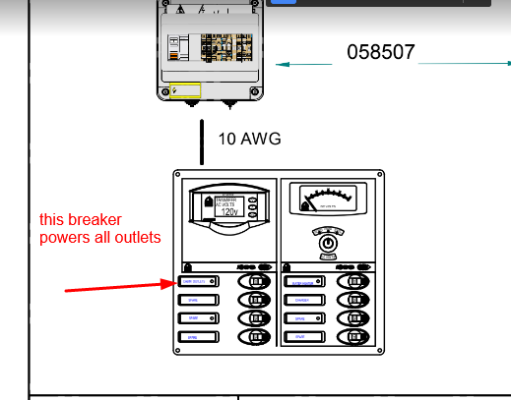You need to move the neutrals on every inverter-powered circuit so that they are connected to only the inverter’s neutral when the inverter is providing power to those circuits. The internal relay bonds the inverter’s output neutrals to ground, since in inverter mode, the inverter is the source, and will also provide a pass-thru connection to the shore neutral when it is not energized. This is part of what UL458 requires, as well as ABYC standards. ALL neutrals - think those little LED indicator lamps- those too.
If you don’t, it will work, but if you try to connect to a GFCI or ELCI protected shore pedestal, it can trip the shore main. That means you can take down an entire pier. You can make fast friends if you pull in at closing time and connect as the staff is making their escape with the key to the panel where the reset is located, and everyone is running A/C!
The GFI sees the neutral imbalance or connection to ground and promptly trips as designed. You typically cannot measure this leakage without a purpose built meter, they’re in the high hundreds and up.
If the process doesn’t make sense to you, then an ABYC certified electrician or corrosion tech can help insure that your proposed install will be functional AND safe. Lots easier to get it right at the git go than to try to DX a non-working system when you plug in to your first GFCI-protected shore supply!

